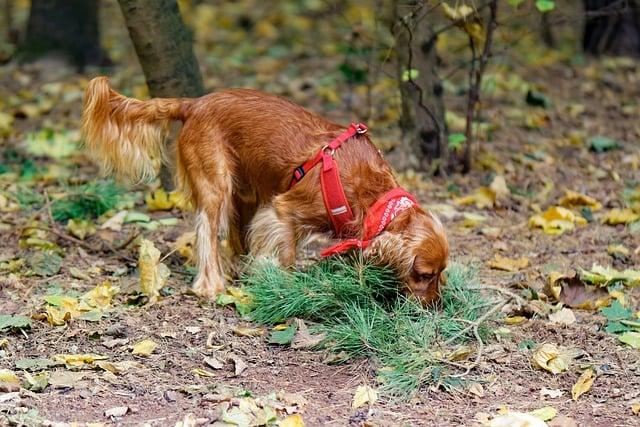When Sarah adopted Max, a spirited rescue dog, she envisioned endless playtime and companionship. But soon, Max’s playful barks turned into growls, leaving Sarah confused and worried. After consulting a professional trainer, she learned that Max’s aggression stemmed from fear and past trauma. Understanding his behavior was crucial; it wasn’t just aggression—it was a cry for help. By addressing his needs and providing a safe environment, Sarah transformed Max into a loving companion. Remember, aggression often masks deeper issues; understanding is the first step to healing.
Contents
- Understanding the Root Causes of Aggressive Behavior in Dogs
- Identifying Warning Signs and Triggers of Aggression
- Effective Training Techniques to Manage and Redirect Aggressive Behavior
- Creating a Safe and Supportive Environment for Your Dogs Well-Being
- Q&A
Understanding the Root Causes of Aggressive Behavior in Dogs
Aggressive behavior in dogs can stem from a variety of underlying issues, each requiring careful consideration and understanding. One of the primary factors is **fear**. When a dog feels threatened or insecure, it may resort to aggression as a defense mechanism. This can occur in unfamiliar environments, around strange people or animals, or even in response to loud noises. Recognizing signs of fear in your dog is crucial, as addressing these feelings can help mitigate aggressive responses.
Another significant contributor to aggression is **territoriality**. Dogs are naturally protective of their homes and families. When they perceive a potential intruder, whether it be another animal or a person, their instinct is to guard their territory. This behavior can manifest as growling, barking, or lunging. Understanding your dog’s territorial instincts can help you manage their behavior and create a more harmonious living environment.
Lastly, **health issues** can also trigger aggression. Pain or discomfort from an injury, illness, or even certain medical conditions can cause a normally docile dog to act out aggressively. If your dog suddenly displays aggressive behavior, it is essential to consult with a veterinarian to rule out any underlying health problems. Addressing these issues not only improves your dog’s well-being but also fosters a more peaceful relationship between you and your pet.
Identifying Warning Signs and Triggers of Aggression
Understanding your dog’s behavior is crucial for fostering a harmonious relationship. Aggression in dogs can often be a response to specific stimuli or situations. By recognizing the warning signs, you can take proactive measures to address the underlying issues. Look for behaviors such as:
- Growling or Snarling: These vocalizations are clear indicators that your dog is feeling threatened or uncomfortable.
- Baring Teeth: This is a direct warning sign that your dog is ready to defend itself.
- Stiff Body Language: A rigid posture can signal that your dog is on high alert and may react aggressively.
Triggers for aggression can vary widely among dogs, often rooted in past experiences or environmental factors. Common triggers include:
- Fear: Dogs that have been mistreated or poorly socialized may react aggressively when they feel threatened.
- Protectiveness: Some dogs exhibit aggression when they perceive a threat to their territory or family.
- Frustration: A dog that is restrained on a leash may become aggressive out of frustration when it cannot reach another dog or person.
Paying attention to your dog’s body language can provide invaluable insights into their emotional state. Signs of discomfort, such as:
- Tucked Tail: Indicates fear or submission.
- Ears Pinned Back: Suggests anxiety or aggression.
- Averting Gaze: A sign that your dog is trying to avoid confrontation.
By being vigilant and observant, you can identify these subtle cues and take appropriate action. Whether it involves consulting a professional trainer or modifying your dog’s environment, addressing aggression early on can lead to a more peaceful coexistence. Understanding these dynamics not only helps in managing your dog’s behavior but also enhances your bond with them.
Effective Training Techniques to Manage and Redirect Aggressive Behavior
Understanding and addressing aggressive behavior in dogs requires a multifaceted approach that combines patience, consistency, and effective training techniques. One of the most impactful methods is **positive reinforcement**. This technique involves rewarding your dog for displaying calm and non-aggressive behaviors, which encourages them to repeat those actions. Treats, praise, or playtime can serve as powerful motivators, helping your dog associate good behavior with positive outcomes.
Another effective strategy is **desensitization**. This involves gradually exposing your dog to the triggers that provoke aggressive responses in a controlled manner. Start at a distance where your dog feels safe and gradually decrease that distance over time, rewarding them for remaining calm. This method helps your dog learn to cope with their triggers without resorting to aggression, ultimately leading to a more relaxed demeanor.
Incorporating **structured socialization** into your dog’s routine can also play a crucial role in managing aggression. Arrange controlled interactions with other dogs and people, ensuring these encounters are positive experiences. This not only helps your dog learn appropriate social behaviors but also builds their confidence in various situations. Always supervise these interactions and be ready to intervene if your dog shows signs of stress or aggression.
Lastly, consider the importance of **consistent training commands**. Teaching your dog basic commands such as “sit,” “stay,” and “leave it” can provide you with tools to redirect aggressive behavior effectively. When your dog begins to show signs of aggression, using these commands can help divert their attention and refocus their energy. Consistency in training reinforces your role as a leader and helps your dog understand expectations, ultimately reducing aggressive tendencies.
Creating a Safe and Supportive Environment for Your Dogs Well-Being
Creating a nurturing space for your dog is essential for their overall well-being and can significantly reduce aggressive behaviors. Dogs thrive in environments where they feel secure and understood. To foster this atmosphere, consider the following:
- Establish a Routine: Dogs are creatures of habit. A consistent daily schedule for feeding, walks, and playtime can help them feel more secure and less anxious.
- Safe Spaces: Designate areas in your home where your dog can retreat when they feel overwhelmed. This could be a cozy bed in a quiet corner or a crate that serves as their personal sanctuary.
- Positive Reinforcement: Encourage good behavior through rewards. Use treats, praise, or playtime to reinforce positive actions, which can help build their confidence and reduce fear-based aggression.
- Socialization Opportunities: Gradually expose your dog to new experiences, people, and other animals. Controlled socialization can help them learn appropriate behaviors and reduce their tendency to react aggressively.
Understanding your dog’s body language is crucial in creating a supportive environment. Dogs communicate their feelings through various signals, such as tail position, ear orientation, and facial expressions. By being attentive to these cues, you can identify when your dog is feeling stressed or threatened, allowing you to intervene before aggressive behavior escalates. Recognizing signs of discomfort, such as growling or stiffening, can help you address the situation proactively.
Additionally, providing mental stimulation is vital for your dog’s emotional health. Boredom can lead to frustration and aggressive behavior. Engage your dog with interactive toys, puzzle feeders, or training exercises that challenge their mind. Regular playtime not only strengthens your bond but also channels their energy into positive activities, reducing the likelihood of aggressive outbursts.
consider the impact of your own behavior on your dog’s emotional state. Dogs are highly perceptive and can pick up on their owner’s stress or anxiety. Maintaining a calm and assertive demeanor can help your dog feel more secure. If you find that your dog’s aggression persists despite your efforts, consulting a professional dog trainer or behaviorist may provide additional strategies tailored to your dog’s specific needs.
Q&A
-
What causes aggression in dogs?
Aggression in dogs can stem from various factors, including:
- Fear or anxiety
- Protectiveness over territory or family
- Pain or medical issues
- Lack of socialization
Understanding the root cause is essential for addressing the behavior effectively.
-
How can I tell if my dog’s aggression is serious?
Serious aggression can be identified by:
- Growling or snarling
- Baring teeth
- Snapping or biting
- Stiff body posture
If you notice these signs, it’s crucial to seek professional help immediately.
-
What should I do if my dog shows aggression?
Immediate steps include:
- Stay calm and avoid yelling
- Remove your dog from the situation
- Consult a veterinarian to rule out medical issues
- Engage a professional dog trainer or behaviorist
Taking these actions can help prevent escalation and ensure safety.
-
Can aggression in dogs be treated?
Yes, aggression can often be managed or treated through:
- Behavior modification techniques
- Positive reinforcement training
- Consistent routines and socialization
- Medication, if recommended by a veterinarian
With the right approach, many dogs can learn to behave more appropriately.
Understanding your dog’s aggressive behavior is crucial for fostering a harmonious relationship. By addressing underlying issues and seeking professional guidance, you can transform aggression into trust and companionship. Don’t wait—take the first step today!

大家好,我是彼得潘,專業的手法身體治療師。我喜歡探索和研究各種主題,並透過與人工智慧的合作分享專業、實用、有趣的文章。我們定期進行人工審核,以確保內容的準確性。如果您發現文章中有任何不準確的地方,請隨時與我們聯繫,我們會及時糾正。您可以透過 [email protected] 與我們聯繫。



